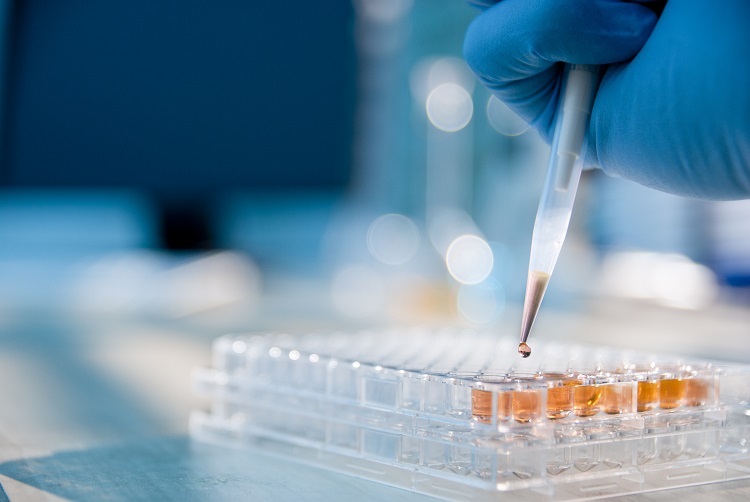EU court issues significant decision on pharma-device 'borderline' product case
Published on 24th April 2025
European ruling clarifies the definition of pharmacological action for health products

The Court of Justice of the European Union (CJEU) has delivered a recent judgment on the referral of the German Federal Court of Justice (Bundesgerichtshof), offering a fresh judicial perspective on the nuanced distinction between medicinal products and medical devices.
The decision (rendered in case C-589/23) clarifies the border between the two regulatory qualifications and may impact both sectors. It relies on new EU guidance and provides detailed insights into what constitutes a pharmacological effect and other matters relevant to the pharma and medtech industries.
Disputed medical devices
The case involved two German life sciences companies active in the sale and promotion of a product marketed as a medical device and aimed at preventing cystitis (a form of bladder infection) and other urinary tract infections (UTIs), as well as supporting their treatment.
The dispute was initiated by the Verband Sozialer Wettbewerb (VSW), a German association advocating for fair competition within the local market. The VSW argued that the product should rather be qualified as a medicinal product and therefore requires a marketing authorisation, which it did not have.
Both the first and second instances in Germany confirmed the plaintiff's arguments and argued that the product should be classified as a medicinal product. Upon the defendant's appeal against this decision, the German Federal Court of Justice referred the case to the CJEU on the interpretation of the EU Community Code's definition of a medicinal product.
In its decision, the CJEU confirmed a pharmacological primary effect in the products' function, suggesting a potential reclassification of the device as a medicinal product. This decision coincides with the ongoing revision of the Community Code, which aims to integrate new definitions into EU legislation including drug-device combinations and combinations with a product other than a medical device.
Interpreting pharmacological action
According to the EU Medical Devices Regulation (MDR), recently scrutinised through a targeted evaluation at EU level, medical devices are primarily intended for a variety of medical purposes, a few examples of which include the diagnosis, prevention, monitoring, or treatment of diseases. They are meant to achieve this purpose through physical or mechanical means primarily, while medicinal products achieve their main intended action through pharmacological, immunological, or metabolic means.
Therefore, to determine whether the product is to be classified as a medical device or a medicinal product, the core issue in this case revolved around the mechanism by which the products – marketed as medical devices until then – worked.
Specifically, the products contained D-mannose, a type of sugar, that binds to bacteria in a reversible manner preventing them from adhering to human cells. By blocking this adhesion, D-mannose effectively helps to prevent bacterial infections such as UTIs. The legal question was whether this reversible binding action of D-mannose to bacteria could be considered a pharmacological action.
The CJEU confirmed that such binding does qualify as a pharmacological effect under the Community Code, which is currently undergoing revision as part of the EU pharma package.
The CJEU's interpretation aligns with the broad definition of pharmacological action as an interaction at the molecular level that can block physiological functions or pathological processes.
The significance of the judgment lies in its interpretation of what can be considered pharmacological. It ensures that substances that bind reversibly to bacteria, such as D-mannose, are appropriately qualified before market launch.
Broad definition and 'borderline' cases
The EU Community Code defines medicinal products broadly to include any substance that can restore, correct or modify physiological functions through pharmacological, immunological or metabolic actions.
The CJEU's decision reinforced this broad interpretation. It argued that a narrow interpretation would exclude actions such as the reversible binding of D-mannose to bacteria, which happens through a hydrogen bond. It further stated that such an interpretation would go against previous EU court decisions and the goals of the European pharmaceutical legislation, namely the objective of safeguarding health and safety.
The court also recalled a former amendment to the EU Community Code, introduced in 2004 to address the emergence of new therapies and the growing number of "borderline" products between the medicinal product sector and other sectors, including devices.
These amendments to the medicinal product definition were made to avoid any doubt as to the applicable legislation when a product while fully falling within the definition of a medicinal product may also fall within the definition of other regulated products. This supports the court's interpretation that a product that falls within the definition of a medicinal product is covered by the legal regime established by the Community Code. Accordingly, it may not be classified as a "medical device" within the meaning of the MDR.
For businesses, this confirms the long-standing EU approach that products with pharmacological action, even if borderline, are likely to be subject to the more stringent requirements of medicinal product regulations. The CJEU advises that, in cases of doubt, products should be classified as medicinal products to maintain high standards of quality, safety and efficacy.
EU guidance documents
The ruling provides a noteworthy affirmation of past and current European guidance documents, including those issued by the Medical Device Coordination Group (MDCG) and former "Meddev" guidelines published by the European Commission.
The Meddev guidance retained by the CJEU defines pharmacological means as an interaction between the molecules of the substance in question and a cellular constituent, usually referred to as a receptor, which blocks the response to another agent. This definition was further clarified in a 2022 MDCG guidance, which specifies that such interactions typically occur at a molecular level and can include bonding by hydrogen bonds.
Upon a detailed analysis of EU guidelines and former CJEU case law, the court concluded that a substance which, by means of a reversible binding to bacteria, prevents the bacteria from adhering to human cells must be regarded as exerting a pharmacological action.
Osborne Clarke comment
The CJEU's judgment in Case C-589/23 provides essential clarity on the definition of pharmacological action and reinforces the broad scope of medicinal products under EU law. For pharmaceutical and medtech businesses, this ruling underscores the importance of accurately qualifying products to comply with regulatory standards and ensure compliant market access.
Businesses involved in products that act by reversible binding to cellular constituents might consider evaluating the mode of action of their products to confirm the appropriate classification. Utilising EU guidance documents can support this process and aid compliance with relevant directives. Additionally, businesses may want to prepare for potential regulatory scrutiny of borderline products and reflect on the implications of this ruling for their product portfolios.





